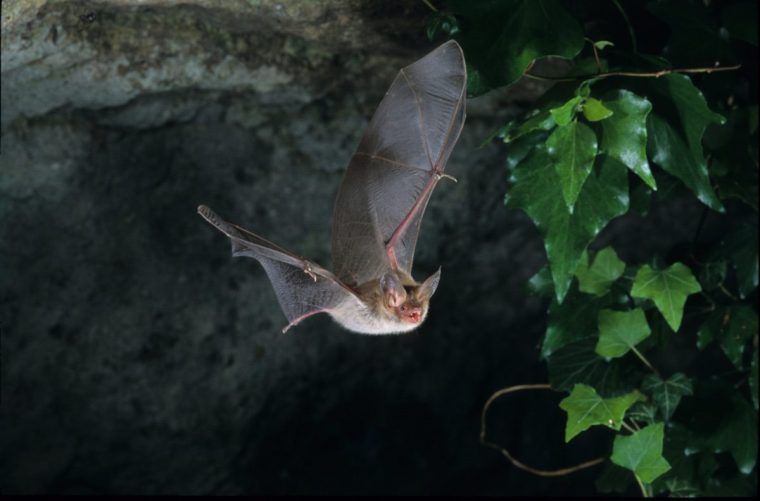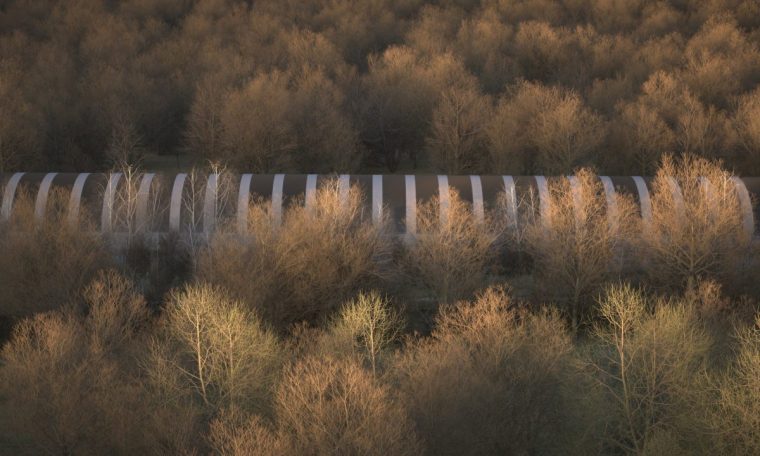A £100m “bat shed” is being built for HS2 in Buckinghamshire to protect just 300 bats that do not roost in the nearest woodland, i can reveal.
Sir Jon Thompson, chair of HS2 Ltd, revealed the cost of the structure while answering questions at the Rail Industry Association conference in London last week in an effort to illustrate why the project has gone so far over budget.
He claimed the 1km-concrete tunnel was required to mitigate the potential harm HS2 could cause to the population of Bechstein’s bat found in the Bernwood Forest area of Buckinghamshire, where the high-speed line will pass through on its way to Birmingham.
HS2, as with any other construction project, has an obligation to comply with environmental law and must obtain a licence for work that will affect wildlife from Natural England, the independent body which advises the government.
Engineers came up with the so-called “bat shed” – which is made from concrete and includes two specially-designed “crossing points” – to prevent bats being hit by a train in an area called Sheephouse Wood.

However, Buckinghamshire Council, which remains opposed to the rail project, failed to approve plans for the Sheephouse Wood Bat Mitigation Structure (SWBMS), and HS2 had to take their case to the national planning inspectorate which finally gave it the green light in January.
Thompson admitted he believes the tunnel will be a “blot on the landscape” and has had to be built despite “no evidence” that bats were at risk from the trains.
Now, i can reveal a survey published by Natural England in June found that the population of Bechstein’s bat living in the Bernwood area, which covers almost 350 hectares, is no more than 300, and none of the three main breeding colonies are in Sheephouse Wood where the £100m shed is to be built.
This means the cost of the structure works out at almost £340,000 per bat.
HS2’s environmental report, which was submitted as part of its planning application, said that “no bats or bat roosts were recorded in trees that will be subject to management work during surveys carried out in 2022”.
However, experts at Natural England believe it is still important to take action because the bats are likely to “commute” and forage in the Sheephouse Wood area.
“While the bats generally preferred to forage in and around the woodlands close to their maternity roosts, they frequently fed throughout the Bernwood area,” the report said.
The Sheephouse Wood Mitigation Structure will “stop bats from emerging from the western edge of Sheephouse Wood immediately into the railway corridor”, it adds.
Transport Secretary Louise Haigh has described the £100m building as a “shocking example” of the failure to control costs at HS2, which could end up costing £66bn.
“Since becoming Transport Secretary, I have seen up close the scale of failure in HS2’s project delivery and this is just the tip of the iceberg,” she said.
Ms Haigh has ordered a review of HS2 which will be carried out by infrastructure adviser James Stewart to see what lessons can be learnt and how government can gain greater oversight over future spending.
i understands HS2 Ltd has always felt it was faced with a “high bar” which meant that it had to prove not “a single bat” would be harmed in Bernwood Forest, even if foraging a considerable distance from its roost.
Dan Whitby, founder of the Bat Conservation and Research Unit, described the “bat shed” as a “ridiculous waste of money”.
“I don’t think it’s justifiable,” he told i. “I know people at Natural England – they aren’t there to say ‘build this or build that’. They’ve been asked ‘would it meet the requirements to protect bats’ and they’ve said yes. It’s for the consultants and designers to come up with the most effective solution.
“I would really question why it costs £100m, where has that come from? What’s the breakdown? If I had even a tenth of that money I would spend it on conservation work that’s 100 times more valuable.
“That is what ecologists have been saying, I’ve heard numerous colleagues saying things like ‘that would fund my charity for ten years’. “There are other ways you can protect bats, there are different options.
“It feels like this is always the way with HS2 – everything seems to be more expensive than it should be.”

A spokesperson for HS2 Ltd said: “HS2 sets new standards for environmental sustainability, ensuring wildlife protection as it builds Britain’s high-speed railway. However, the demands of the UK planning and environmental consents process come at a high cost, largely out of HS2 Ltd’s control.
“To comply with laws protecting vulnerable species, including internationally protected bats near Sheephouse Wood, Buckinghamshire, a covered structure was designed. Its size has doubled over time, partly due to the need to accommodate future provision for local rail services.
“Despite parliamentary approval in 2017, HS2 must secure over 8,000 additional consents, with delays consuming time and resources.”
Natural England director for national delivery, Stephanie Bird-Halton, said: “Natural England has not required HS2 to adopt this structure, nor advised on the design or cost.
“HS2 Ltd is required by legislation to avoid harm to the environment and it is for them to make choices, consider risks and factor in costs when deciding how to do this.
“HS2 themselves identified the need for the mitigation structure through field surveys that were conducted and interpreted by their own ecologists. Our input with this project was only ever to advise on whether proposed mitigations would work, as is our duty under the Habitats Regulations.”
The presence of Bechstein’s bats in this part of Buckinghamshire is fairly recent – in fact the first, single male was recorded only in 2009.
Field work has continued to be carried out on behalf of HS2 since 2012 including radio tracking, emergence surveys, bat filming, thermal imaging, infrared surveys, tree climbing and faecal DNA analysis.
This has resulted in the latest data which found breeding colonies in Finemere Wood (12 roosts), Grendon and Doddershall Woods (29 roosts) and Ham Home-cum-Hamgreen Woods (10 roosts).
The conservation status of Bechstein’s bats is designated as “least concern” because there has been a “consistent increase” in numbers in recent years.
However, the Bat Conservation Trust, which has been criticising HS2 plans for at least a decade, suggested nothing should be taken for granted.
In a blog post written in reponse to the £100m bat shed story, the organisation said: “The conservation of our natural heritage, including nature and wildlife, alongside large-scale infrastructure projects and other development does have costs associated with it.
“We don’t want – and we don’t need – to live in a world where transport networks for people replace wildlife, we need both.”


